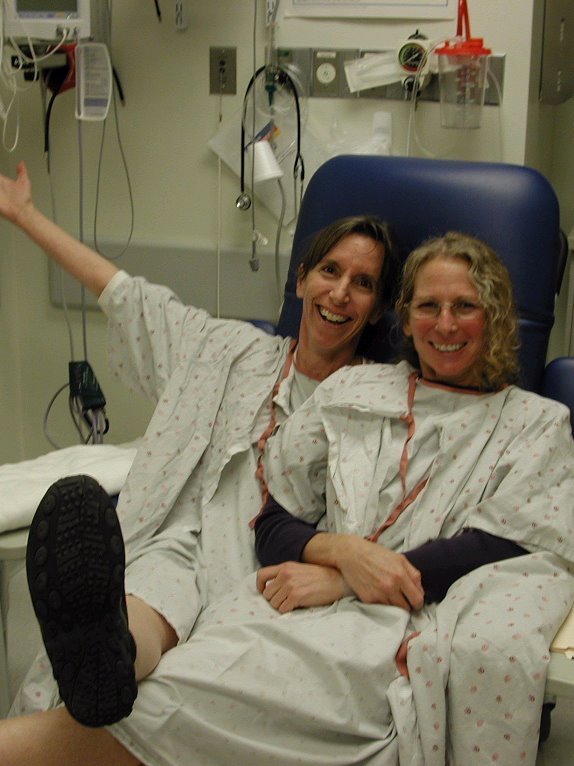PN 100They're going to have to find a new name, because PN 100 won't play on a prime time TV ad. But this little pharmaceutical 'two-fer' could be just the thing for those with joint pain AND a touchy stomach. We know that NSAIDs (non-steroidal anti-inflammatory drugs) are great analgesics for persons with musculoskeletal pain from injury or arthritis. Unfortunately, they are tough on the GI tract, causing injury and ulcerations in the stomach and also ulcerations in the lower intestine which can lead to diarrhea (see
Running on ibuprofen).
The COX-2 inhibitors such as Vioxx and Celebrex were supposed to be the answer to the problem--stemming painful inflammation while being gentle on the stomach. As you know, however, both Vioxx and Bextra were yanked from the market when their use was linked to cardiovascular problems. Furthermore, an English study just found that the COX-2 drugs were no safer than the old NSAIDs with respect to causing gastrointestinal problems.
The simultaneous use of ulcer-healing drugs such as Prilosec or Nexium with NSAIDs has been shown to reduce those GI risks. Enter PN 100, a combination drug currently in phase 3 clinical trials. This tablet combines an immediate release coating of lansoprazole (a potent acid inhibitor also know as Prevacid) surrounding a core of naproxen (an effective NSAID).
In one of those 'who-the-heck-would-volunteer-for-this?' studies, volunteers downed either once-daily delayed-release Prevacid plus naproxen twice daily, naproxen two times a day, or twice daily PN 100. After 2 weeks of treatments, the participants queued up for endoscopy for a little look-see into their stomachs.
Two patients on naproxen already had stomach ulcers as did one of the two pill group. The bunch on PN 100 were ulcer-free. 24-hour pH monitoring (as in 'Here, volunteers, swallow this tube so we can track your stomach acid for an entire day") showed that acid was better suppressed throughout the day and night on the twice daily Prevacid.
 These little piggies make omega-3 fatty acids!
These little piggies make omega-3 fatty acids!






